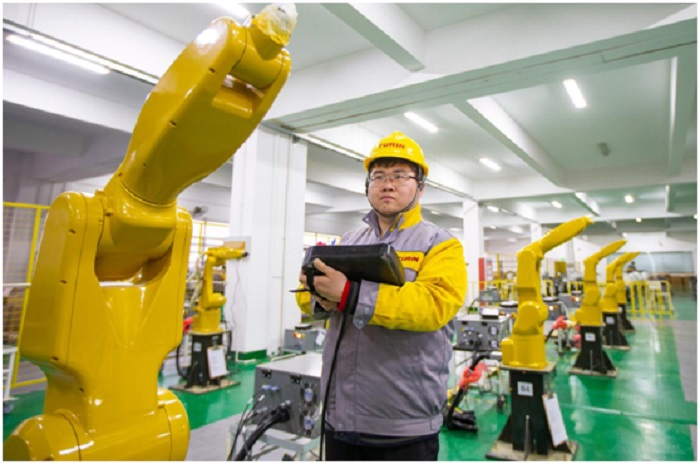



New professions have sprouted up and enjoyed rapid development in China, as new industries and new business forms and models have constantly emerged with the country’s economic and social development, scientific and technological progress, as well as industrial structure adjustment and upgrading.
China’s Ministry of Human Resources and Social Security (MOHRSS) recently released a list of 18 more new professions. Before that, the MOHRSS had successively released 56 new professions in four batches since it resumed work for the release of new professions in 2019.
The new professions include robotics engineering technicians, data security engineers, digital solution designers, carbon sequestration assessors, energy efficiency and carbon neutral building consultants, and family education mentors.
The releasing of new professions reflects trends in technological and social transformation. The recently announced new professions can be roughly divided into three categories: those generated by the development of digital economy, such as robotics engineering technicians; jobs driven by China’s goal of peaking carbon dioxide emissions before 2030 and achieving carbon neutrality before 2060 like carbon sequestration assessors; family education mentor and some other new professions incubated by China’s new development stage, philosophy and paradigm as well as people’s aspiration for a better life.
According to an official with the MOHRSS, such newly released professions as robotics engineering technicians and additive manufacturing engineers were defined according to the Statistical Classification of the Digital Economy and Its Core Industries (2021) issued by the National Bureau of Statistics of China in June 2021.
Identifying professions related to digital economy represents an important innovation in China’s occupational classification and is of great significance for promoting the development of digital economy and technologies and improving the digital literacy of the whole society, the official pointed out.
The announcement of new professions enjoys a strong social foundation, and reflects continuous improvement in people’s quality of life.
Chinese people’s increasing demand for high-quality family education has boosted the emergence of the family education mentors; homestay stewards suits the ever-increasing individual needs of tourists.
As the construction of urban rail transit is advanced at a fast pace and more and more relevant facilities have been put into operation, the country has seen its talent gap in the industry surge to several hundred thousand.
The identification of the profession of urban rail transit maintenance personnel is expected to provide a solid guarantee for the travel safety of urban residents.
The emergence of new professions has without doubt widened the options for job hunters, said Xu Ming, director of the National Governance Modernization and Social Organization Research Center. New professions feature flexibility and integration of interest and work and provide an opportunity for achieving personal values, which makes them particularly favored by young people, Xu added.
Against this background, new employment forms represented by new professions have gained strong momentum, which helps boost employment, and improve its quality and structure.
After the solicitation of public opinions about the 18 new professions, the MOHRSS will improve relevant information and then officially incorporate the new professions into China’s National Occupation Classification Code (2015 edition).
In an effort to enable new professions to better improve people’s lives, the MOHRSS will, together with relevant departments, formulate new occupational standards and guide training institutions in conducting training in accordance with these standards.
Meanwhile, it will actively and prudently implement commercial evaluation, allowing evaluation agencies to issue certificates to those who are qualified in accordance with relevant regulations.
Those who have obtained certificates can enjoy favorable policies including subsidies for vocational training and vocational skill appraisal.


The Executive and members of the.


The Acting Director, FCT Directorate of.


President Bola Ahmed Tinubu has been.



Barely a month after resignation of.


An Abuja based Legal Practitioner, Osuagwu.



Convener of Equitable Remedy, Mrs. Magaret.


Contractors handling the contract for city.


Nigerian government may have concluded plans.


The Diplomatic Correspondents Association of Nigeria.


A rights group, “Follow Me Talk.
Leave a Comment